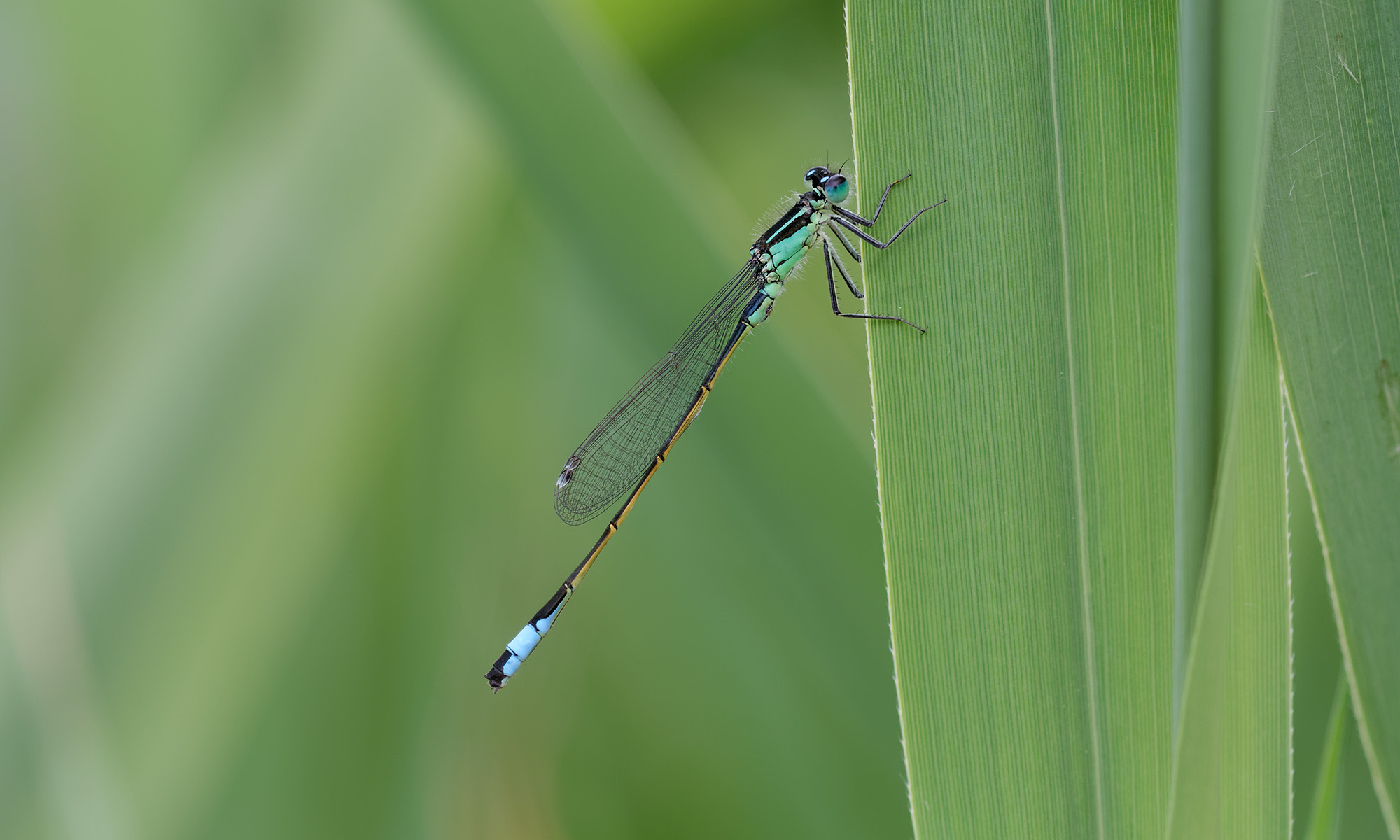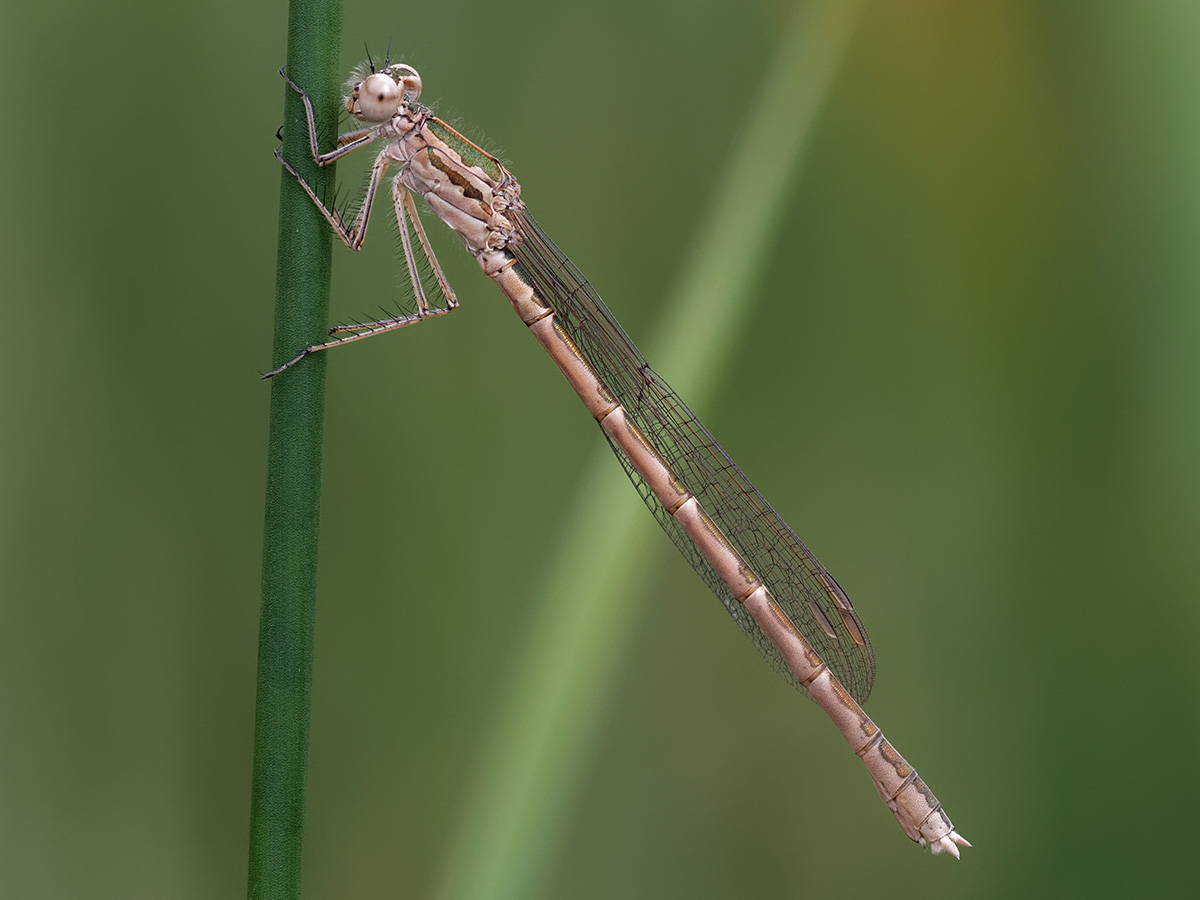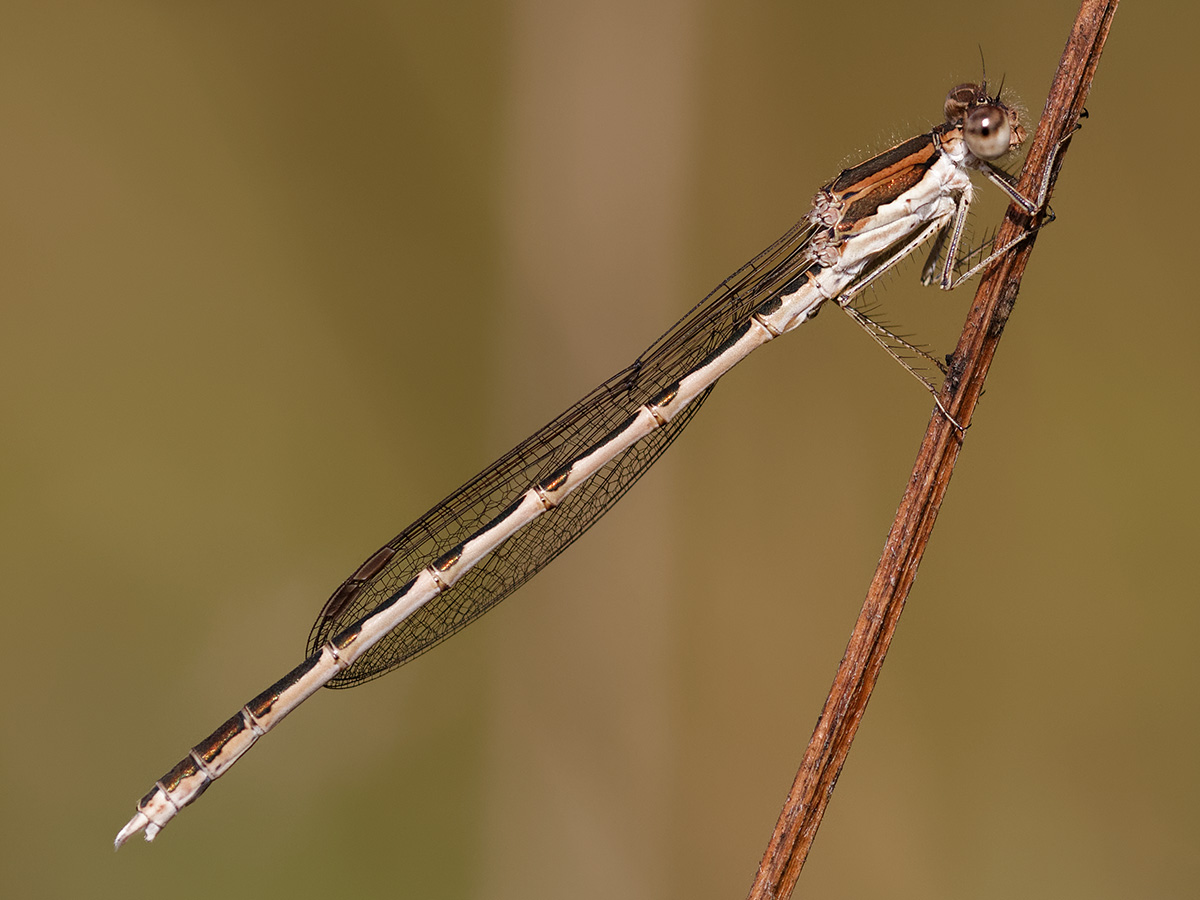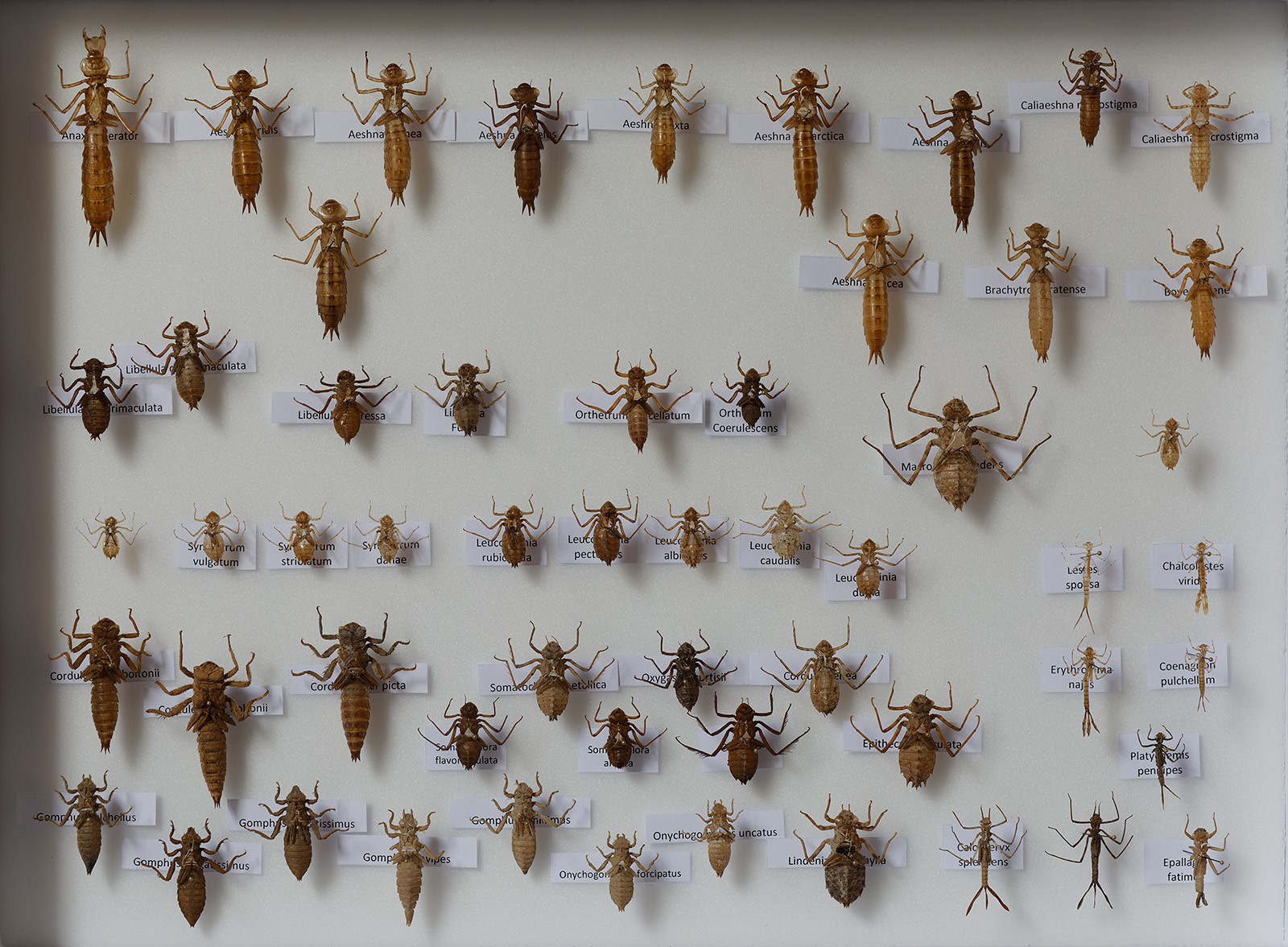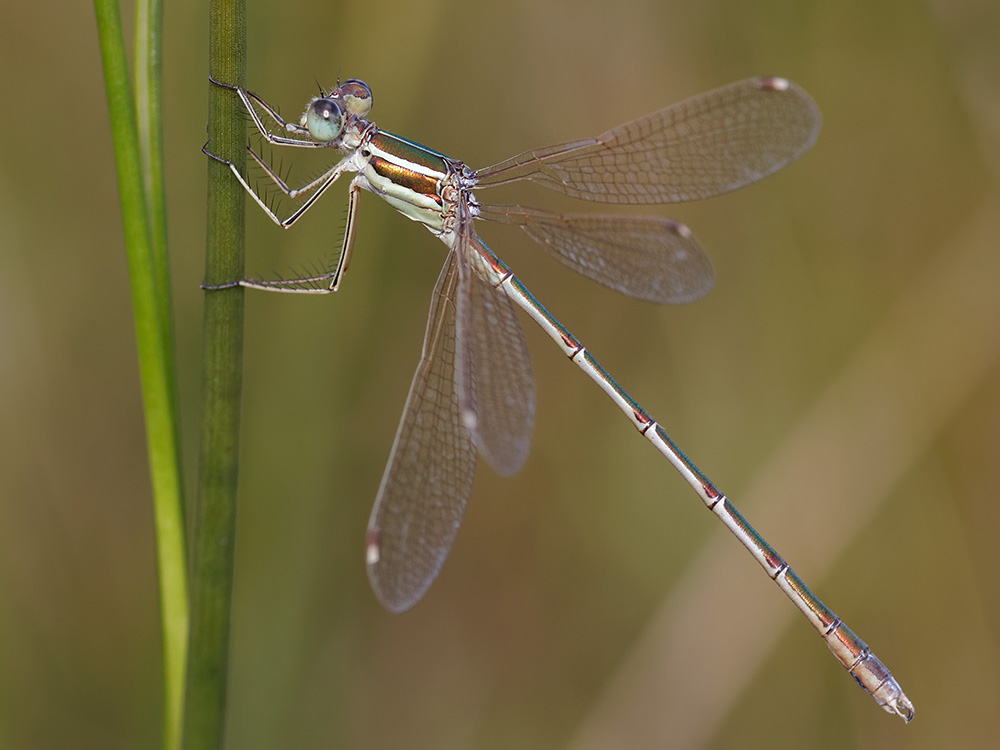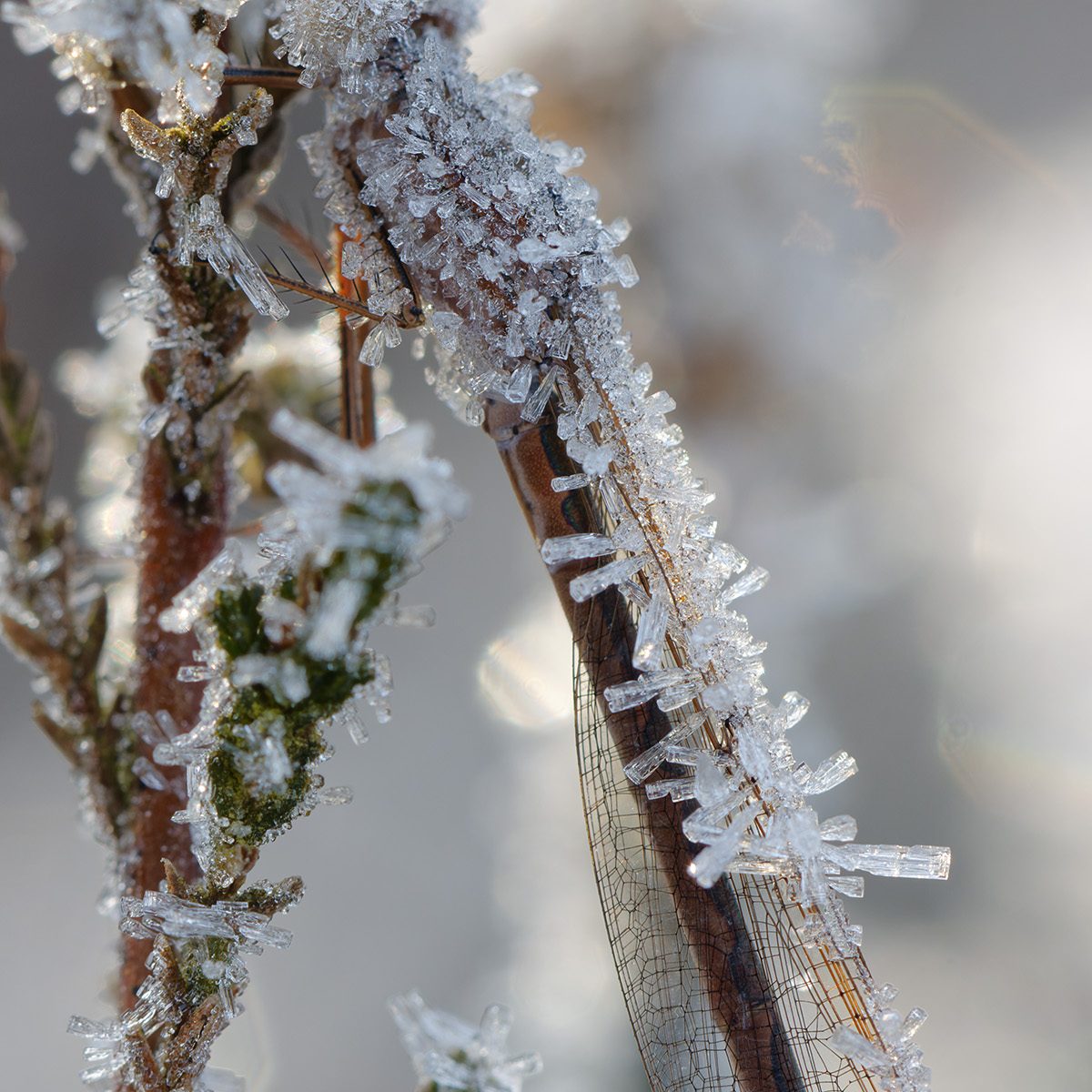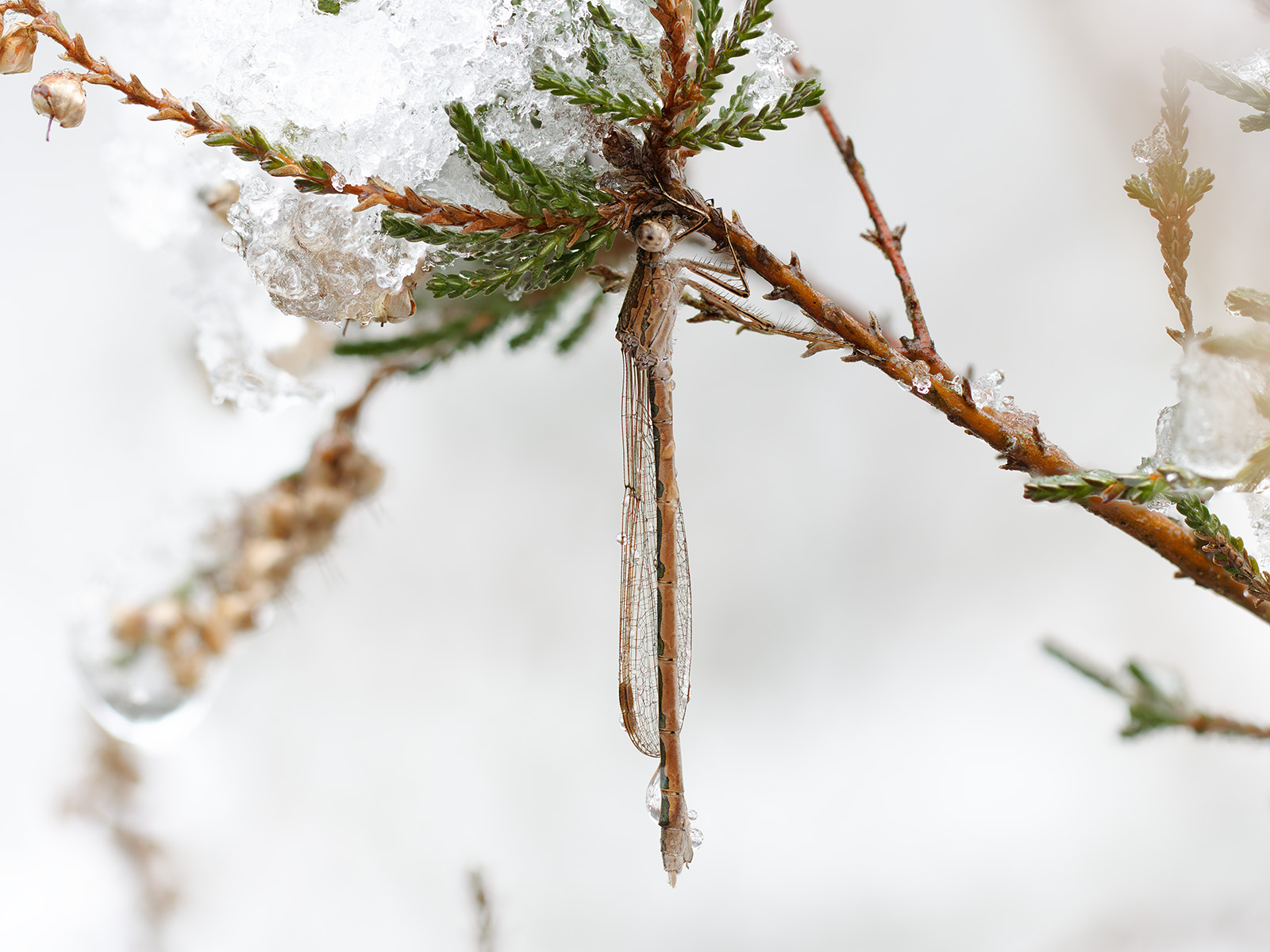Sympecma paedisca (Siberian Winter Damselfly) has the same exceptional life cycle as the similarly looking Common Winter Damselfly (Sympecma fusca): imagos overwinter and can be found in every season. During winter they survive temperatures well below freezing point and they can be found with ice crystals on the eyes or buried in snow.The two species …
Continue reading “Sympecma paedisca (Brauer, 1877) – Siberian Winter Damselfly
NL: Noordse winterjuffer | DE: Sibirische Winterlibelle | FR: Leste enfant“
Sympecma fusca (Common Winter Damselfly) is one of only two Odonata species in Europe of which imagos can be found in every season. Imagos overwinter on sheltered places, often heathlands surrounded by forest, away from water. In spring they return to their freshwater habitat to mate and oviposit. The next generation emerges in summer.The geographical …
Continue reading “Sympecma fusca (Vander Linden, 1820) – Common Winter Damselfly
NL: Bruine winterjuffer | UK: Winter Damselfly | DE: Gemeine Winterlibelle | FR: Leste brun“
For most dragonfly lovers in our region, dragonfly season starts around April. That you can see imago’s all year round, even in winter, will be known by now: both Winter Damselflies (Sympecma sp.) do not hibernate as nymphs or eggs, but survive the cold months as imagos. Read all about it in this article: Frozen …
Continue reading “Two new pages in Dragonflies 101”
Introduction Odonata is the name of the insect order containing both (true) dragonflies (Anisoptera) and damselflies (Zygoptera). Although these two suborders share many characteristics and are often confused, they aren’t exactly the same thing. This page is dedicated to the differences and should be helpful for those who want to know how to tell either …
Continue reading “Dragonfly or damselfly: the differences explained
An illustrated guide to morphological features of both suborders“
Introduction Dragonfly and damselfly imagos are generally absent during Europe’s winter months. Most species survive winter either as eggs or nymphs. These develop and emerge in spring and summer. There are two exceptions: both European species of Sympecma have inverted their schedule. These species emerge late summer, hibernate as imagos and mate and oviposit in …
Continue reading “Frozen damselflies
The exceptional life cycle of Winter Damselflies (Sympecma sp.)“
Time for a large update, including lots of new content as well as large improvements in website usability! Over the past months I’ve added a lot of new pictures to the already large collection. This update was long overdue: the new photos aren’t just from 2021 but 2020 as well. Among the many new additions …
Continue reading “2021’s big content and usability update
Many new photos and usability improvements“
Quite large, slender damselflies with narrow wings. Two subfamilies are distinguished: Lestinae and Sympecmatinae. While most damselflies rest with their wings folded together above their abdomens, members of the subfamily Lestinae usually rest with the wings partially spread away from the body. Most spreadwings have a metallic shine on parts of their body. The two …
Continue reading “Lestidae (spreadwings)
NL: Pantserjuffers | DE: Teichjungfern | FR: Lestes“
The exact definition of Europe depends on whether political or bio-geographical borders are considered. To avoid confusion, the area covered by this website is defined as follows: Europe is considered to be the area bounded by the Arctic Ocean to the north. Going clockwise from there Europe’s borders with Asia are formed by the Ural Mountains …
Continue reading “Checklist of European species
With their common names in English, Dutch, German and French“
On this page you can find some Frequently Asked Questions and their answers. Some of these questions have been asked to me dozens of times, so I thought it useful to make a FAQ list. Q: What’s the difference between a dragonfly and a damselfly?A: The very short and incomplete answer is: damselflies are the …
Continue reading “FAQ”
This page will contain a growing collection of richly illustrated articles about a variation of Odonata-related topics, such as: FAQ (Frequently Asked Questions) Dragonfly or damselfly: the differences explained Anatomy and terminology Lifecycle Frozen Damselflies: the exceptional life cycle of Winter Damselflies (Sympecma sp.) Male or female: how to tell Checklist of the European species …
Continue reading “Dragonflies 101”
